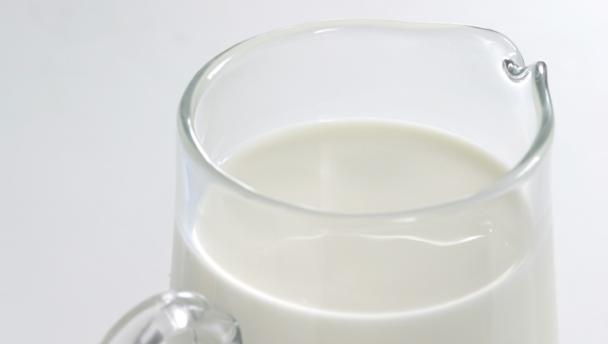

A highly nutritious liquid, milk is a very versatile kitchen ingredient. In the UK, cows’ milk is the most popular milk, although goats’ milk is increasing in popularity, and sheep and water buffalo milks are also occasionally available.
Not only do animal milks vary significantly in terms of their nutritional content (although all are valuable sources of protein, calcium, vitamins and minerals), but also milk from the same source can differ according to such factors as the animal’s diet, the time of milking, and the breed concerned – Jersey and Guernsey cattle, for example, are famous for their ultra-creamy milk, which is sold as Channel Island or gold-top milk.
 Norwegian fish pie
Norwegian fish pie
 Chicken and leek pie
Chicken and leek pie
 How to make pea and ham soup
How to make pea and ham soup
 Bitterballen
Bitterballen
 Smoked haddock chowder with leeks and sweetcorn
Smoked haddock chowder with leeks and sweetcorn
 Ten-minute tomato soup
Ten-minute tomato soup
 Cinnamon porridge with grated pear
Cinnamon porridge with grated pear
 Porridge with berries
Porridge with berries
 Mexican sweetcorn pancakes, poached eggs and salsa
Mexican sweetcorn pancakes, poached eggs and salsa
 Fluffy American pancakes
Fluffy American pancakes
 Corned beef hash with poached eggs
Corned beef hash with poached eggs
 Curried cauliflower soup
Curried cauliflower soup
 Double baked cheese soufflés
Double baked cheese soufflés
 Yorkshire puddings
Yorkshire puddings
 Simple bread sauce
Simple bread sauce
 Basic pancakes with sugar and lemon
Basic pancakes with sugar and lemon
 Mary Berry’s mother’s bread and butter pudding
Mary Berry’s mother’s bread and butter pudding
 Queen of puddings
Queen of puddings
 Custard tart
Custard tart
 Basic white rolls
Basic white rolls
 Lemon drizzle traybake
Lemon drizzle traybake
 German apple cake
German apple cake
 Egg nog
Egg nog
 The ultimate masala tea
The ultimate masala tea
 Blackberry and apple crumble smoothie
Blackberry and apple crumble smoothie
 Summer fruit smoothie
Summer fruit smoothie
 Mango smoothie
Mango smoothie
 Brandy (or rum) sauce
Brandy (or rum) sauce
 White sauce
White sauce
 Delia's any kind of cheese sauce
Delia's any kind of cheese sauce
 Bread sauce
Bread sauce
'Raw’ milk denotes milk that hasn’t undergone pasteurisation, and thus shouldn’t be consumed by pregnant women, young children and those with compromised immune systems.
Semi-skimmed and skimmed milks have had their fat content reduced, in contrast to ‘whole’ milk, which is full-fat.
As fresh milk cannot be kept for more than a couple of days, unopened, most is treated before sale. The vast majority will be homogenised, to stop the cream from separating from the rest of the milk, and pasteurised, or gently heated, to improve its shelf-life. UHT milk is sterilised with heat, so can be kept at room temperature, unopened, for many months. This process slightly alters the taste, however.
Both evaporated and condensed milks have undergone more sustained heat treatment to reduce their water content: evaporated milk is then sterilised to preserve it, whereas condensed milk has sugar added for the same purpose. They can be kept at room temperature for long periods, and taste and look very different to fresh milk; these days they are predominantly used in baking and desserts.
Milk should be kept in the fridge. It can be frozen, but it will expand on freezing, so make sure the packaging hasn’t ruptured before defrosting it in the fridge for 24 hours.
Article by Felicity Cloake
Type the ingredients you want to use, then click Go. For better results you can use quotation marks around phrases (e.g. "chicken breast"). Alternatively you can search by chef, programme, cuisine, diet, or dish (e.g. Lasagne).